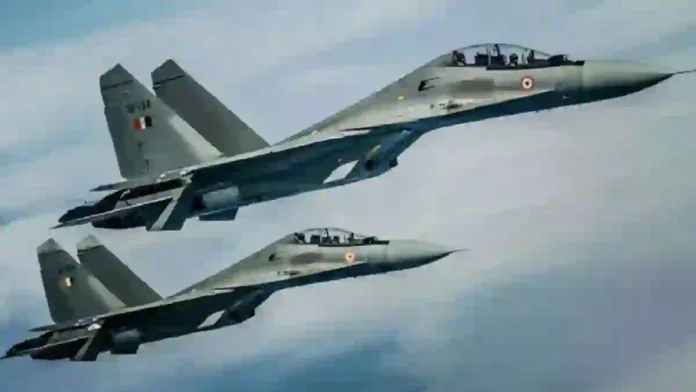India has launched the Super-30 upgrade program for its Su-30MKI fighter jet fleet, representing a major leap in air combat capabilities and self-reliance. The project, approved at an estimated cost of ₹63,000–66,829 crore (approximately $7.5–7.8 billion), will initially upgrade 84 Su-30MKIs over the next 3–4 years, with the goal of extending their operational life to at least 2055.
Key Features of The Super-30 Upgrade
Advanced Radar: The centrepiece is the integration of the Virupaksha Gallium Nitride (GaN)-based Active Electronically Scanned Array (AESA) radar, developed by DRDO. This radar can detect and track fighter-sized targets at ranges of 300–400 km, a significant improvement over the legacy systems, and is designed to counter stealthy adversaries from both Pakistan and China.
Read- China gave Pak live inputs on our vectors during Operation Sindoor: Top Army general
Digital Cockpit: The Su-30MKI will receive a fully digitised glass cockpit with large touchscreens and a new mission computer, greatly enhancing pilot situational awareness and mission effectiveness.
Indigenous Weapons: Integration of Astra MK-2 and Astra MK-3 ‘Gandiva’ air-to-air missiles, with engagement ranges up to 300 km, will allow the upgraded Su-30MKI to strike enemy aircraft at much greater distances than before.
Electronic Warfare And Sensors: The upgrade includes new electronic warfare suites for jamming and disrupting enemy communications, as well as indigenous infrared search and track (IRST) systems for improved targeting in both air-to-air and air-to-ground roles.
Manned-Unmanned Teaming: The jets will gain the ability to operate in concert with advanced autonomous drones using AI and secure data links, boosting their mission flexibility and survivability.
Strategic And Operational Impact:
The Su-30MKI, already the backbone of the Indian Air Force (IAF) with over 250 in service, will be transformed into a 4.5+ generation platform—approaching fifth-generation capabilities except for stealth.
Read- Indian Navy Gets Twin Power Upgrade: Stealth Frigates INS Tamal, INS Udaygiri Ready To Dominate Seas
The upgrades directly address operational gaps revealed during the 2019 Balakot airstrike, where Su-30MKIs struggled against Pakistani F-16s due to radar and electronic warfare limitations. The new systems are expected to neutralise these disadvantages, making the Su-30MKI a formidable match for Pakistan’s F-16s and a credible deterrent against China’s J-20 and JF-17 Block 3 fighters.
The program emphasises indigenisation, with up to 78% Indian-made components in the upgraded jets, reducing reliance on foreign suppliers and boosting the domestic defence industry.
The cost-effectiveness of the Super-30 program is notable, as it delivers near-fifth-generation capabilities at a fraction of the price of acquiring new Western fighters, while buying time for India’s indigenous Advanced Medium Combat Aircraft (AMCA) program to mature.
Implementation And Challenges
The upgrade will be led by Hindustan Aeronautics Limited (HAL), with significant participation from the Indian private sector and DRDO.
Integrating advanced Indian systems into a Russian-designed airframe presents technical challenges, particularly in software compatibility and flight certification, which could extend timelines for full fleet modernisation.
The first batch of 84 aircraft will be upgraded after a 7-year development and testing phase, followed by progressive induction in batches.
Conclusion
The Super-30 upgrade is a critical component of India’s broader defence modernisation, aiming to restore squadron strength, close capability gaps with adversaries, and strengthen indigenous technological prowess. Once complete, the upgraded Su-30MKI fleet is expected to outclass Pakistan’s F-16s and maintain a credible deterrent posture in the region, while supporting India’s transition to next-generation air power.
Based On A News18 Report
Agencies




